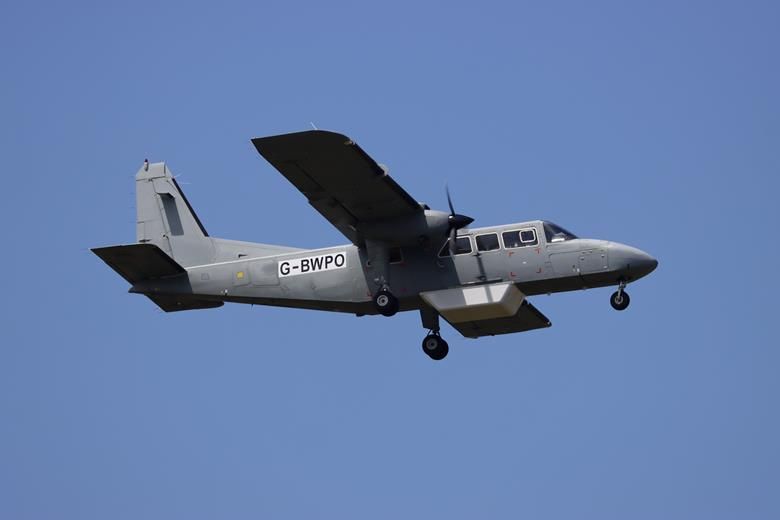5G infrastructure from the sky trialed

A group of UK companies has completed a series of demonstration flights of an airbourne 5G connectivity system.
The project is led by Stratospheric Platforms Limited (SPL), a non-terrestrial networks telecoms developer, which is developing airborne antennas to deliver widescale high-performance 5G coverage.
The 5G connectivity system can integrate into a terrestrial telecoms network at connection speeds of up to 200Mbps, over 15,000km2.
For the demonstration, the system was integrated into a Britten-Norman Islander aircraft. The trial was aimed at demonstrating the aircraft's capability to operate safely with the large 5G antenna installed.
This technology offers some benefits of traditional mobile network infrastructure, including being able to quickly restore networks after major disasters like earthquakes or tsunamis.
The next phase of the project involves demonstrating the technology via a connection to a private UK-based national 5G telecommunications network.
Richard Deakin, CEO at Stratospheric Platforms Limited, said: 'Stratospheric Platforms is dedicated to creating pioneering innovative solutions that transform the connectivity landscape. Our commitment to delivering high-altitude, zero-carbon, long-endurance communication platforms will revolutionise how the world stays connected, especially in remote and underserved regions. We believe that our cutting-edge technology will provide unprecedented opportunities for global communication and create a more connected and inclusive world. Today's flight test is an important step in the continuing validation of our technology breakthroughs.'
Dr Garnet Ridgway, head of flight dynamics at Britten-Norman, added: 'This project demonstrates the full capabilities of both Britten-Norman as an accomplished trials organisation and the turboprop Islander as a highly capable trials aircraft. Working closely with our partners, the project includes deliverables from our design, manufacture, MRO, flight test and flight operations teams. It's always satisfying to deliver a safe and effective flight test programme, but the huge potential of SPL's system and the collaborative nature of the team made this one particularly exciting. The large and complex nature of the system places significant demands on the host aircraft. However, the BN2T-4S performed admirably; the combination of payload capacity, endurance, climb performance, twin engine reliability, robustness and electrical power generation makes it unbeatable for this mission.'
)
)
)
